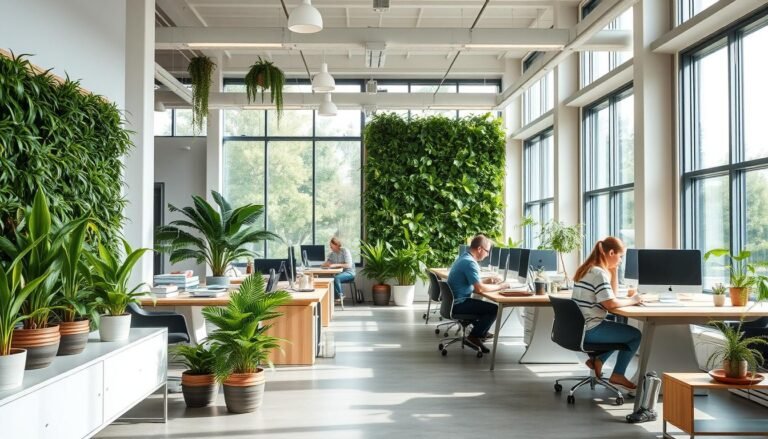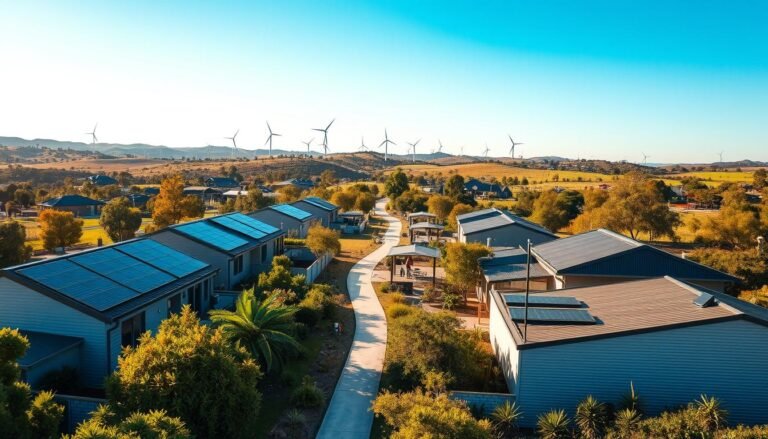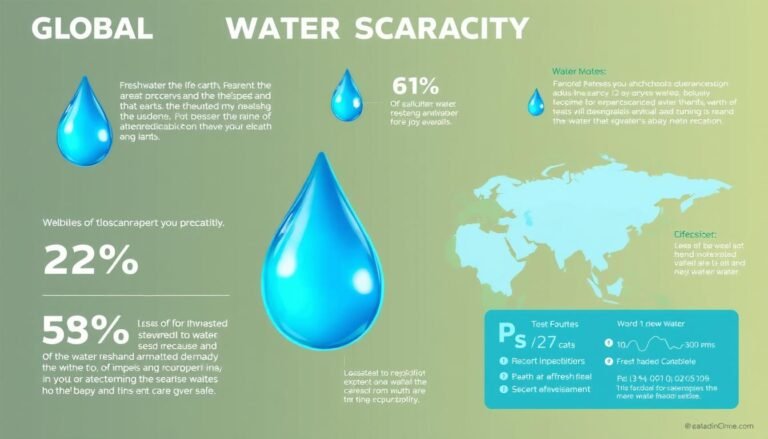As we head into 2025, the need for greener travel options is becoming increasingly important. In Australia, the way we commute to work is a significant contributor to our carbon footprint. With the growing awareness of climate change, it’s time to explore sustainable commuting options that can make a real difference.
By adopting greener ways to travel to work, Australians can reduce their environmental impact while also improving their quality of life. This article will explore various sustainable commuting options available in Australia, highlighting their benefits and how they can be implemented in daily life.
Key Takeaways
- Reduce carbon footprint with greener commuting options
- Explore alternative modes of transport for daily commutes
- Discover the benefits of sustainable commuting in Australia
- Learn how to implement eco-friendly commuting habits
- Improve your quality of life with sustainable travel options
The Evolution of Australian Commuting Patterns
As Australia’s cities continue to grow, the need for efficient and eco-friendly commuting options has become increasingly important. The traditional methods of commuting are being reevaluated in light of their environmental impact, and there’s a noticeable shift towards more sustainable practices.
Current Commuting Statistics Across Major Australian Cities
Major Australian cities exhibit diverse commuting patterns. For instance, Sydney and Melbourne have high rates of car usage, while cities like Brisbane and Perth are seeing a rise in cycling and public transport use. According to recent data, the average commute time in Australian cities ranges from 30 to 60 minutes, with a significant portion of the population relying on private vehicles.
Carbon Footprint of Traditional Commuting Methods
Traditional commuting methods, particularly those reliant on fossil fuels, contribute significantly to Australia’s carbon footprint. The emissions from private vehicles are a major concern, with studies indicating that commuting accounts for a substantial portion of urban air pollution. This has prompted calls for a transition to cleaner, more sustainable commuting options.
The Shift Towards Sustainability in Urban Mobility
There’s a growing trend towards sustainable urban mobility in Australia, driven by both government policies and consumer demand. Initiatives such as investing in public transport infrastructure, promoting cycling, and encouraging the use of electric vehicles are gaining momentum. This shift is not only beneficial for the environment but also enhances the quality of life for urban residents by reducing congestion and improving air quality.
Sustainable Commuting Options Australia: A Comprehensive Guide
As Australia continues to urbanize, the need for sustainable commuting options has never been more pressing. The country’s cities are growing, and with this growth comes an increased demand for transport solutions that are both environmentally friendly and economically viable.
Defining Sustainable Transport in the Australian Context
Sustainable transport in Australia refers to modes of transport that have a lower environmental impact compared to traditional methods. This includes electric vehicles, public transport, cycling, and walking. These options not only reduce carbon emissions but also contribute to a healthier population.
Environmental and Economic Benefits of Green Commuting
Green commuting offers numerous benefits, both environmental and economic. By reducing reliance on fossil fuels, we can decrease air pollution and mitigate climate change. Economically, sustainable commuting options can save individuals money on fuel and vehicle maintenance, while also reducing the economic burden on cities by decreasing congestion and infrastructure wear.
| Commuting Method | Environmental Impact | Economic Benefits |
|---|---|---|
| Public Transport | Reduces carbon emissions by up to 95% per passenger | Saves on fuel and vehicle maintenance |
| Cycling | Zero emissions | Reduces healthcare costs through increased physical activity |
| Electric Vehicles | Significantly reduces greenhouse gas emissions | Lower operating costs compared to traditional vehicles |
Overcoming Barriers to Adoption in Australian Cities
Despite the benefits, there are challenges to adopting sustainable commuting practices in Australian cities. These include infrastructure challenges and the need for behavioral change.
Infrastructure Challenges
Australia’s cities need to invest in infrastructure that supports sustainable commuting, such as dedicated bike lanes, efficient public transport systems, and charging stations for electric vehicles.
Behavioral Change Strategies
Encouraging a shift towards sustainable commuting requires changing commuter behavior. This can be achieved through education campaigns, incentives for using green transport, and integrating different modes of transport to make commuting easier and more efficient.
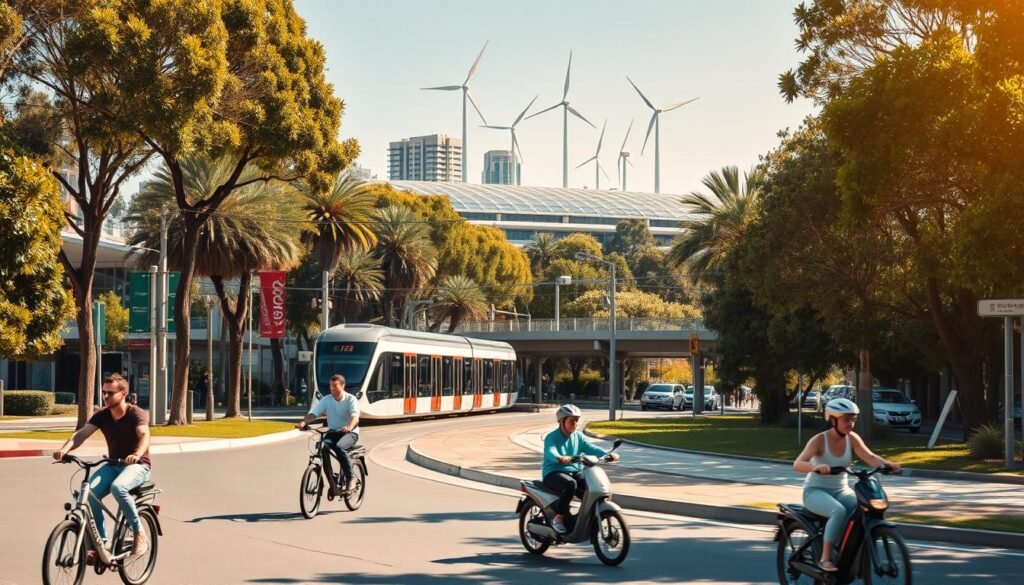
By understanding the benefits and challenges of sustainable commuting, Australians can make informed choices about their daily travel. As the country moves towards a greener future, the adoption of sustainable commuting options will play a crucial role in reducing environmental impact and improving the quality of life for its citizens.
Next-Generation Public Transport Networks
As Australia moves towards a more sustainable future, its public transport networks are undergoing significant transformations. The focus is on creating eco-friendly transport systems that not only reduce carbon emissions but also enhance the commuting experience.
Zero-Emission Buses and Trains in Australian Metropolitan Areas
A key component of this transformation is the introduction of zero-emission buses and trains. Cities like Sydney and Melbourne are at the forefront of this change, with plans to electrify their entire public transport fleets. According to a report by the Australian Parliamentary Committee on Transport Connectivity, transitioning to zero-emission vehicles can significantly reduce the carbon footprint of urban transport systems. You can read more about the committee’s findings on their official report.
Integrated Transport Hubs and Multimodal Connectivity
Another crucial aspect is the development of integrated transport hubs that facilitate seamless transfers between different modes of transport. These hubs are designed to improve connectivity and reduce travel times, making public transport a more attractive option for commuters.
Smart Ticketing Systems and Real-Time Transit Information
The adoption of smart ticketing systems and real-time transit information is also revolutionizing public transport in Australia. These technologies provide commuters with a more convenient and efficient way to travel, enhancing their overall experience.
Case Study: Sydney’s Transport Innovation
Sydney is a prime example of transport innovation in action. The city has implemented a range of initiatives, including the introduction of electric buses and the development of smart transport infrastructure. These efforts are part of a broader strategy to create a more sustainable and efficient transport network.
Cycling and Micromobility Revolution
The cycling and micromobility revolution is gaining momentum in Australia, offering sustainable alternatives for daily commutes. As cities become increasingly congested, Australians are turning to greener modes of transport that are not only environmentally friendly but also promote a healthier lifestyle.
E-Bike Infrastructure and Cycling Superhighways
Australia is investing heavily in e-bike infrastructure, with cities developing cycling superhighways that provide safe and efficient routes for commuters. These dedicated bike lanes are designed to encourage more Australians to adopt cycling as a primary mode of transport.
Electric Scooters and Shared Mobility Services in Australian CBDs
Electric scooters and shared mobility services are becoming increasingly popular in Australian Central Business Districts (CBDs). These services offer a convenient and flexible way for people to travel short distances, reducing reliance on traditional public transport.
Workplace Facilities Supporting Active Commuting
To support the growing trend of active commuting, workplaces are being encouraged to provide facilities that cater to cyclists and micromobility users. This includes bike storage solutions and shower facilities, making it easier for employees to commute to work sustainably.
Bike Storage Solutions
Secure bike storage is a crucial facility for workplaces looking to support cycling commuters. By providing designated bike parking areas, employers can encourage more employees to cycle to work.
Shower and Change Room Facilities
Shower and change room facilities are essential for commuters who cycle or use other forms of active transport. These amenities allow employees to freshen up before starting their workday, making active commuting a more practical option.
| Facility | Benefits | Impact on Commuting |
|---|---|---|
| Bike Storage | Secure parking for bicycles | Encourages cycling to work |
| Shower Facilities | Allows commuters to freshen up | Makes active commuting practical |
| Change Rooms | Provides privacy for changing | Supports active commuting culture |
By investing in cycling infrastructure and workplace facilities, Australia is taking significant steps towards a more sustainable and environmentally friendly commuting culture.
The Australian Electric Vehicle Transition
As the world shifts towards more sustainable options, Australia’s electric vehicle market is poised for substantial growth. This transition is driven by increasing environmental concerns, technological advancements, and shifting consumer preferences.
Market Growth Projections for 2025
The Australian EV market is expected to expand significantly by 2025, driven by increasing affordability and a wider range of models available to consumers. Government incentives and investments in charging infrastructure are also key factors.
National Charging Network Expansion
A critical component of the EV transition is the expansion of the national charging network. Efforts are underway to increase the number of charging stations across the country, making EVs a more practical option for Australians.
Hydrogen and Alternative Fuel Vehicles
While EVs are gaining prominence, hydrogen and alternative fuel vehicles are also being explored in the Australian market. These alternatives offer promising solutions for long-range and heavy-duty transport.
Government Incentives for Zero-Emission Vehicles
The Australian government is offering various incentives to encourage the adoption of zero-emission vehicles. These include tax exemptions, rebates, and investments in EV infrastructure, making EVs more attractive to consumers.
Digital Platforms Transforming Shared Commuting
Digital innovations are transforming the way Australians commute together. The rise of shared commuting platforms is making it easier for people to travel to work together, reducing the number of vehicles on the road and promoting a more sustainable transport culture.
Australian Carpooling and Ridesharing Applications
Carpooling and ridesharing apps have gained popularity in Australia, offering a convenient way for commuters to share rides and split costs. These platforms not only reduce travel expenses but also contribute to a decrease in carbon emissions. Popular apps are now integrating features like real-time tracking and in-app payments, enhancing the user experience.
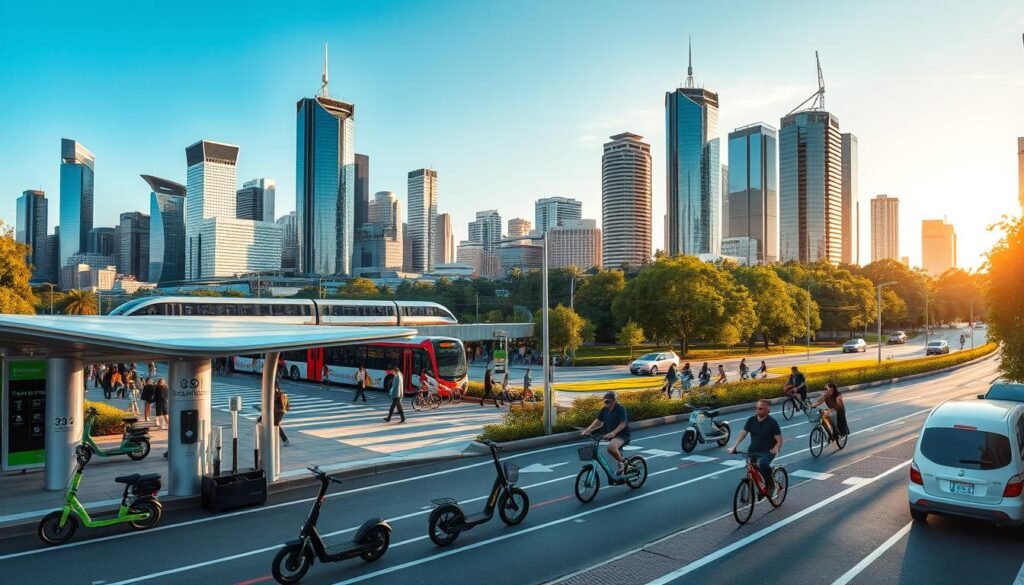
Corporate Transport Programs for Sustainable Commuting
Many Australian companies are now adopting corporate transport programs to encourage green travel practices among their employees. These programs often include incentives for carpooling, using public transport, or cycling to work. By promoting green travel workplace initiatives, businesses can contribute to a reduction in their employees’ carbon footprint while also improving employee well-being.
Economic and Social Benefits of Shared Mobility
Shared mobility solutions offer numerous economic and social benefits. By reducing the number of cars on the road, shared commuting can help alleviate traffic congestion and decrease air pollution. Moreover, it can lead to cost savings for individuals and businesses alike.
Reducing Traffic Congestion in Major Cities
One of the significant advantages of shared commuting is its potential to reduce traffic congestion in major Australian cities. By encouraging more people to share rides, these platforms can help decrease the volume of traffic, making commutes faster and more efficient for everyone.
| Benefits | Economic Impact | Environmental Impact |
|---|---|---|
| Reduced Traffic Congestion | Saves time and fuel | Decreases air pollution |
| Cost Savings | Lowers travel expenses | Reduces carbon footprint |
| Increased Productivity | More efficient commutes | Promotes sustainable practices |
The Remote Work Revolution and Reduced Commuting
The shift towards remote work has revolutionized commuting patterns across Australia, offering a greener alternative to traditional daily commutes. As companies adopt flexible work policies, the environmental impact of daily commuting is undergoing a significant transformation.
Post-Pandemic Work Policies and Their Environmental Impact
Post-pandemic work policies have played a crucial role in shaping the remote work landscape. Many Australian companies have adopted hybrid work models, allowing employees to work from home or remote locations part-time. According to a recent survey, this shift has resulted in a significant reduction in commuting-related carbon emissions. As Mark Nelson, CEO of Sustainable Works, notes, “The flexibility of remote work is not only beneficial for employees but also has a positive impact on the environment.”
“The future of work is not just about where we work, but how we work. Embracing remote work can lead to a more sustainable and equitable society.”
Hybrid Work Models Across Australian Industries
Australian industries are embracing hybrid work models, which combine the benefits of office and remote work. This approach not only enhances employee productivity but also contributes to reducing the carbon footprint associated with daily commutes. For instance, companies are leveraging green travel tips for digital nomads to promote sustainable commuting practices among their workforce.
Digital Infrastructure Supporting Distributed Workforces
The growth of remote work is supported by advancements in digital infrastructure. High-speed internet, cloud computing, and collaboration tools have made it possible for employees to work effectively from anywhere. This infrastructure is crucial for maintaining productivity and connectivity in a distributed workforce.
Regional Hub Development and Decentralization
As remote work becomes more prevalent, there is a growing trend towards regional hub development. By decentralizing workspaces and promoting regional hubs, Australia can reduce the strain on major cities and promote more balanced economic growth. This approach also opens up new opportunities for regional communities to thrive.
In conclusion, the remote work revolution is transforming commuting patterns in Australia, offering a more sustainable future. By embracing hybrid work models and investing in digital infrastructure, Australia can continue to reduce its carbon footprint and promote greener commuting options.
Policy Frameworks and Infrastructure Investments
As Australia continues to urbanize, the role of policy frameworks and infrastructure investments in shaping sustainable commuting options becomes increasingly crucial. The country’s transition towards greener transport methods is heavily influenced by these factors.
Federal and State Transport Sustainability Targets
Australia has set ambitious targets to reduce emissions from transport. Both federal and state governments are working towards achieving a significant decrease in carbon footprint through various initiatives.
- Reducing greenhouse gas emissions from transport by 50% by 2030
- Increasing the use of renewable energy in transport to 30% by 2030
- Improving fuel efficiency standards for vehicles
15-Minute City Concepts in Australian Urban Planning
The concept of 15-minute cities, where all daily necessities are within a 15-minute walk or bike ride, is gaining traction in Australian urban planning. This approach aims to reduce the need for lengthy commutes.
Financial Incentives for Green Commuting Adoption
To encourage the adoption of green commuting methods, various financial incentives are being offered. These include subsidies for electric vehicles and tax benefits for sustainable transport users.
Tax Benefits for Sustainable Transport Users
Individuals using sustainable transport methods can benefit from tax incentives. For instance, employees using public transport or cycling to work may be eligible for tax-free commuting allowances.
| Incentive Type | Description | Benefit |
|---|---|---|
| Electric Vehicle Subsidies | Government subsidies for purchasing electric vehicles | Reduced upfront cost for EV buyers |
| Tax-Free Commuting Allowances | Tax incentives for employees using public transport or cycling | Increased take-home pay for commuters |
By implementing these policy frameworks and infrastructure investments, Australia is making significant strides towards a more sustainable commuting future.
Conclusion: Embracing a Greener Commuting Future
As Australia moves towards a more sustainable future, embracing greener commuting options is crucial for reducing the nation’s carbon footprint. The shift towards sustainable commuting options australia is gaining momentum, with various initiatives being implemented to encourage green travel workplace practices.
By adopting sustainable commuting habits, Australians can significantly reduce their environmental impact while also improving their overall quality of life. From electric vehicles to cycling and public transport, there are numerous options available for those looking to make a positive change.
As we look to 2025 and beyond, it’s clear that sustainable commuting will play a vital role in shaping the future of Australian cities. By working together to promote green travel workplace practices and investing in sustainable commuting infrastructure, we can create a healthier, more sustainable environment for generations to come.

